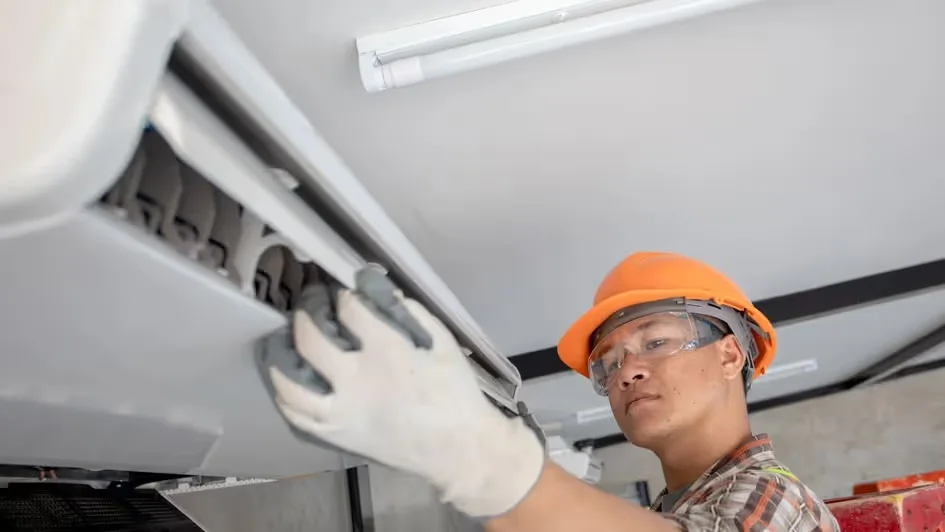
When looking for a heating and cooling system for your home, it’s crucial to choose one that balances efficiency, functionality and finances. That’s why many families use mini-splits for climate control in their home.
Mini-splits—often known as ductless mini-splits—provide several advantages that make them a popular choice for both homes and businesses. They're very energy efficient, reducing energy consumption and saving on utility bills, because they eliminate the energy losses that can come with the ductwork found in traditional HVAC systems. They also permit users to customize the temperature in each room, enhancing overall comfort while not wasting energy.
If you’re considering mini-split installation in Sacramento, it’s worthwhile to first find out if these devices are the best fit for your living situation. Here, we’ll examine how mini-splits measure up to other heating and cooling methods.
What a Mini-Split Is and How It Works
A mini-split, or ductless mini-split, is a heating and cooling device that does not use ductwork. It's a popular choice in homes that don't have existing air ducts and for homes with rooms that aren’t served well by an existing HVAC system.
A mini-split system consists of two major components: an outdoor compressor/condenser and an indoor air-handling component. They are linked by a conduit housing the power cable, refrigerant tubing, suction tubing and a condensate drain.
Here's how it works: the outdoor compressor circulates the refrigerant necessary for heat exchange within the coils and the air handler. The in-house device brings in air from the room, cools or heats it over the coils and pushes the conditioned air back into the room.
Mini-Split vs. Central Air
Mini-splits provide targeted cooling in specific rooms or zones of your residence. They are known for energy efficiency because they only provide hot or cold air for the areas you want. However, they may not blend seamlessly into every decor due to the fact they have wall-mounted indoor units.
Conversely, a central air system uniformly chills your entire home, keeping consistent comfort levels throughout. Its ductwork is hidden away, preserving the interior design of your home. On the other hand, it will likely not be as energy efficient as a mini-split, especially in larger homes or residences where certain rooms may not need nonstop conditioning.
Mini-Split vs. Window AC/Window Unit
Mini-splits are typically more energy efficient and less noisy than a window air conditioning unit and are useful for cooling air in multiple rooms. This is why mini-splits are a convenient alternative for lots of homeowners. They also operate using a type of refrigerant that is more earth-safe, limiting their environmental impact. These units can even add value to your home due to their reliable nature and exceptional cooling capabilities. However, they come with a greater initial investment.
On the contrary, window AC units are less expensive to purchase. They may be a good fit for homes that are not able to accommodate a central AC system or for families with budget constraints. In spite of these advantages, window units can utilize up to 40% more energy than ductless mini-split systems and often are louder.
Mini-Split vs. Portable AC
The answer to what is better, a ductless mini-split or a portable air conditioning unit, will depend on on your priorities. If your main considerations are energy efficiency and cooling capability, a mini-split is considered far superior to a portable AC unit. However, if funding is a key concern, a portable AC costs less.
Mini-Split vs. Gas Furnace
Choosing between a mini-split system and a gas furnace depends on a variety of factors such as the climate in your city, home size, energy efficiency preferences and budget.
A mini-split system most of the time is more energy efficient than a gas furnace. It can heat and cool defined areas in your home, providing custom climate control in individual rooms. Mini-splits also are for the most part quieter and have a larger up-front cost, but their operating costs are usually lower due to their improved energy efficiency.
Alternatively, a gas furnace can be an extremely effective heating source, particularly in colder climates where mini-split heat pumps may struggle to maintain comfort levels in the bitter cold. Although they are less energy efficient than mini-splits, gas furnaces ordinarily cost less. Having said that, their operating costs can be more costly, especially if natural gas prices skyrocket.
Mini-Split vs. Heat Pump
Mini-splits and heat pumps use the principle of heat transfer. They are both energy efficient, but a heat pump's duct system can use more power. This difference aside, the choice between a mini-split and a heat pump often depends on a homeowner's needs and circumstances.
By way of example, if you reside in a warmer climate and mainly need cooling, a mini-split system might be a more effective choice. On the other hand, if you need both heating and cooling and already have ductwork in place, a heat pump might be a more efficient option.
Mini-Split vs. Space Heater
In regards to heating and cooling a household, mini-splits and space heaters each have advantages. However, for total efficiency, versatility, comfort and safety, mini-splits outperform space heaters. Mini-splits have superior energy efficiency due to the fact they deliver conditioned air right to different zones and can serve numerous rooms at once.
Space heaters are a great deal less expensive to buy but are typically recommended for heating a confined area or a single room. They also are often less energy efficient. As opposed to mini-splits, space heaters do not supply cooling. The greatest drawback for space heaters is the risk of fire. Authorities say some 1,700 fires each year involve space heaters.
Customer Testimonials
Our experience with Bishop Mechanical has been awesome. They have quick response, and do a great job! Very friendly, and Professional!









